Muscle strengthening: doing some is better than doing none

Engaging in physical activity is advocated by the World Health Organization to prevent and manage chronic diseases. Although they specifically recommend engaging in muscle-strengthening exercise at moderate or greater intensity, targeting all the major muscle groups on 2 or more days/week, these recommendations are mostly based on the benefits resulting from aerobic exercise.
Strong evidence points to the importance of muscle strengthening in reducing morbidity in people with chronic disease as it is associated with improved metabolic health (through improved glucose and lipid metabolism, lowering blood pressure, depression, the risk of mortality, diabetes, cardiovascular disease and colon and kidney cancer).
This blog article will dive deeper into the findings of a large cross-sectional study including more than 16K individuals and tries to answer:
- If muscle strengthening duration and volume are associated with prevalent chronic health conditions.
- Whether there exists a dose-dependent relationship.
- What exercise mode is preferred?

Let’s get right to the point. Muscle strengthening exercises are associated with a lower prevalence of chronic health conditions. BAM.
Now that we know that, we can look further at the amount and type of muscle strengthening exercise that was associated with these lower prevalences.
The study looked at 5 major health conditions: diabetes, heart disease, respiratory disease, musculoskeletal disorder and anxiety/depression.
Diabetes
It appears that when performing own-bodyweight exercises, the lowest prevalence of diabetes is seen in those engaging in 60minutes of training or more; while this is less for gym-based strength training, where 21-59 minutes leads to the lowest prevalence. No differences were seen between high or low volume per week.
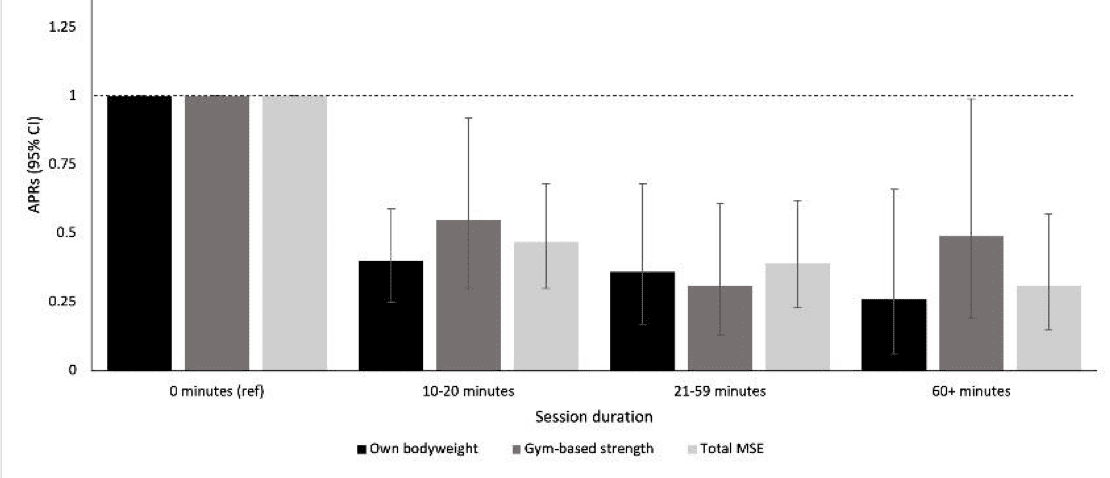
Heart disorder
Regardless of exercise type (own-bodyweight or gym-based strengthening), the lowest prevalence of heart disease was seen in those exercising 60 minutes or more. Here a high volume of gym-based strengthening had a lower likelihood for a heart condition.
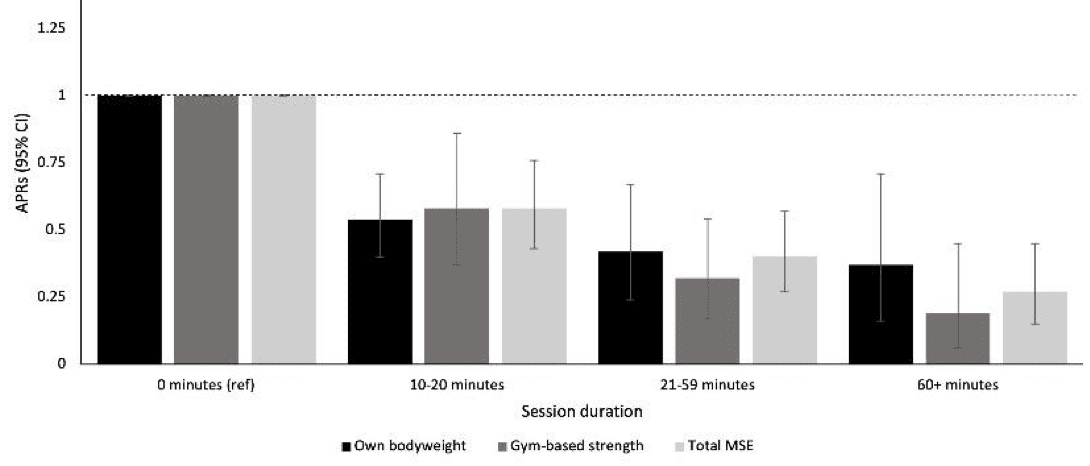
RECOVERY FOR SPORTS PERFORMANCE
Increase Performance Levels by Applying the Latest Research about Recovery in Practice

Respiratory disorder
The lowest prevalence of respiratory disorders was seen when gym-based strengthening was performed for 21-59 minutes and 60 minutes or more for own-bodyweight exercises. For own-body weight, low volume led to the lowest prevalence while for gym-based strengthening low or high volume was comparable.
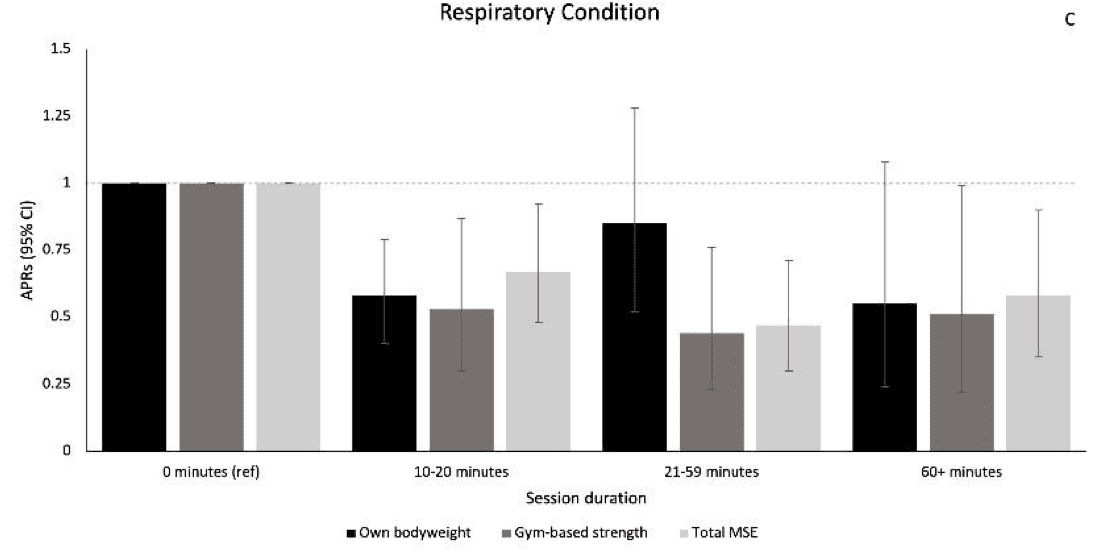
Musculoskeletal disorder
10-20 minutes of own-bodyweight exercises or 60 minutes or more of gym-based strengthening were associated with the lowest likelihood of a musculoskeletal condition. Low volume for own-bodyweight and high-volume for gym-based strengthening was related with the lowest likelihood of a musculoskeletal condition.
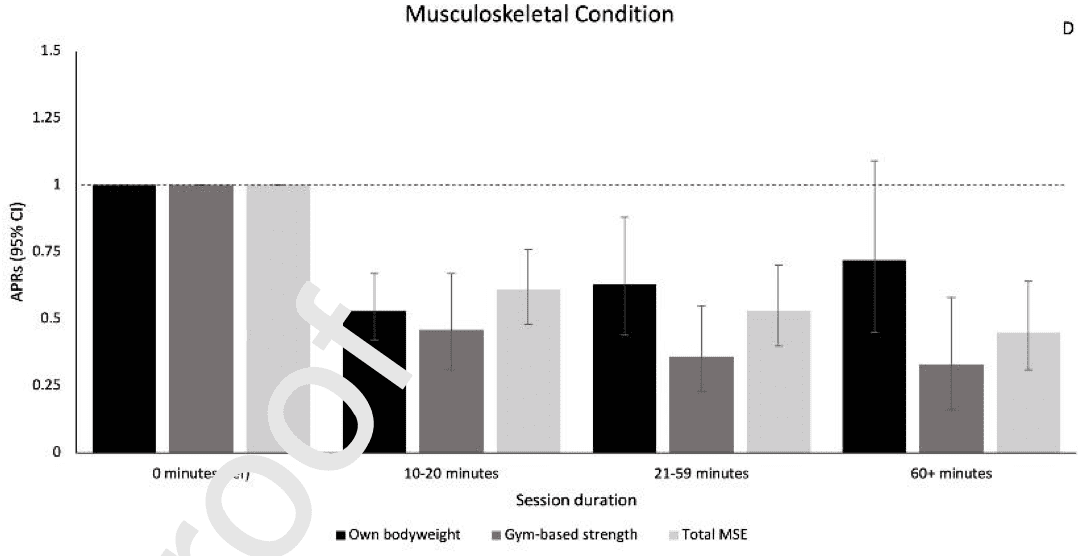
Anxiety/depression
Engaging in 60 minutes or more of own-bodyweight exercise or in 21-59 minutes of gym-based strengthening was related to the lowest likelihood of having anxiety or depression. For both exercise modes, low volume showed the lowest prevalence.
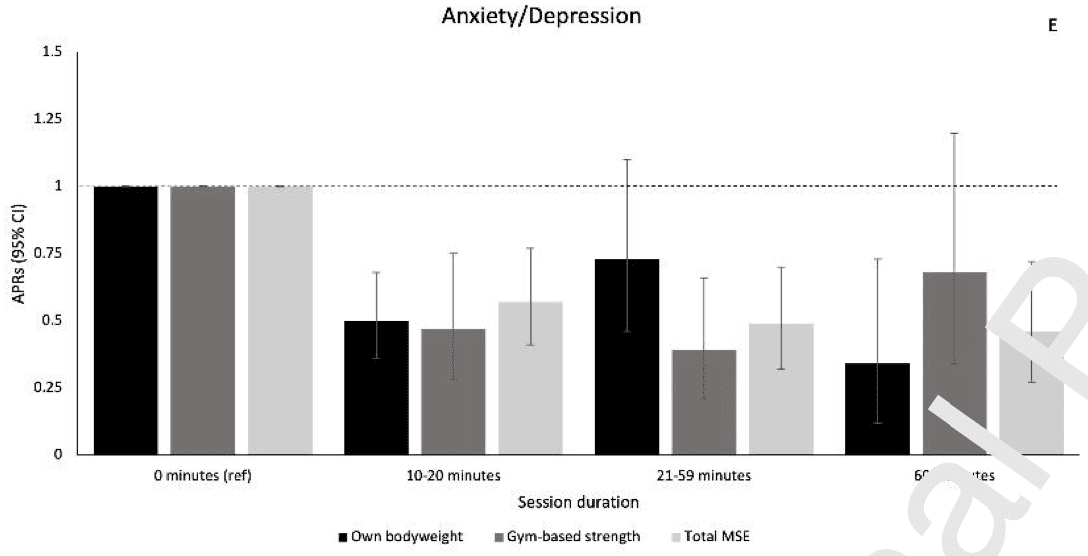
Conclusion
Doing any muscle-strengthening exercise, regardless of mode, duration or volume is associated with a reduced likelihood of diabetes, heart, respiratory and musculoskeletal disorders and anxiety/depression. These associations were still standing after adjusting for as many possible sociodemographic and behavioral confounding factors. Engagement in own-bodyweight exercise for 60 minutes or more and in gym-based strengthening for about 21-59 minutes led to the lowest prevalence of having 2 or more chronic health conditions and here high or low volume participation led to equal prevalence.
This information may really encourage people to engage in regular muscle strength training and may lower the barriers to do so as for all chronic health conditions, their prevalence was lower with doing some muscle strengthening than doing none!
I hope you enjoyed reading this blog!
Ellen
Reference
Shakespear-Druery J, De Cocker K, Biddle SJH, Bennie J. Associations between muscle-strengthening exercise and prevalent chronic health conditions in 16,301 adults: Do session duration and weekly volume matter? J Sci Med Sport. 2022 Jan 7:S1440-2440(22)00001-9. doi: 10.1016/j.jsams.2022.01.001. Epub ahead of print. PMID: 35067480. https://pubmed.ncbi.nlm.nih.gov/35067480/

Ellen Vandyck
Research Manager
NEW BLOG ARTICLES IN YOUR INBOX
Subscribe now and receive a notification once the latest blog article is published.







